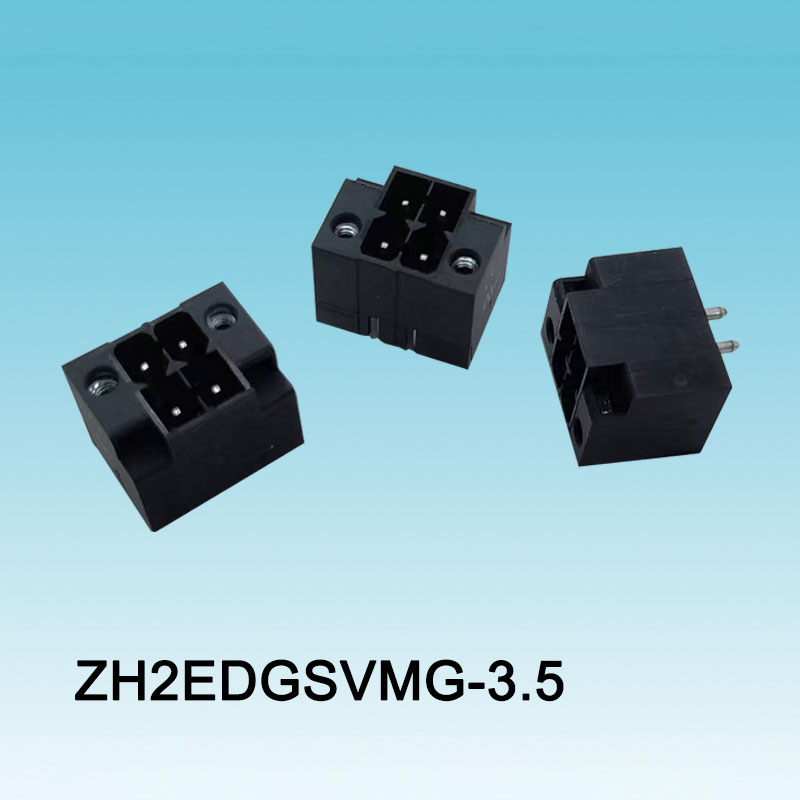Steps to Use Pluggable Terminal Blocks
2024-07-05
Pluggable terminal blocks are essential components in electrical and electronic systems, providing a reliable and efficient means of connecting wires and cables. Here’s a comprehensive guide on their use:
Steps to Use Pluggable Terminal Blocks
1. Preparation:
- Safety Gear: Wear appropriate safety gear such as gloves and safety glasses.
- Tools: Gather necessary tools, including wire strippers, screwdrivers, and a multimeter for testing.
2. Wire Preparation:
- Stripping Wires: Strip the insulation off the ends of the wires to the recommended length, usually about 5-10 mm, depending on the terminal block specifications.
- Twisting Wires: Twist the strands of stranded wires to prevent fraying.
3. Connecting Wires:
- Insert Wires: Insert the stripped end of each wire into the appropriate terminal slot of the pluggable terminal block.
- Secure Wires: Tighten the screw or push down the lever (depending on the type of terminal block) to secure the wire in place. Ensure the connection is tight but avoid over-tightening, which could damage the wire or terminal.
4. Assembling the Terminal Block:
- Plugging: Connect the pluggable part of the terminal block into its corresponding base or counterpart. Ensure it is properly aligned and fully inserted.
- Securing: If the terminal block has a locking mechanism, engage it to prevent accidental disconnection.
5. Testing the Connection:
- Continuity Check: Use a multimeter to check the continuity of the connections to ensure they are properly made and there are no loose wires.
- Power On: Apply power to the system and verify that everything functions as expected.
6. Maintenance:
- Regular Inspection: Periodically inspect the terminal blocks for signs of wear, corrosion, or loose connections.
- Cleaning: Clean the terminal blocks as needed to remove dust and debris.
Applications
Pluggable terminal blocks are used in a wide range of applications, including:
- Industrial Automation: Connecting sensors, actuators, and control systems.
- Electrical Panels: Organizing and managing wiring in control panels and distribution boards.
- Telecommunications: Connecting cables in communication systems and networking equipment.
- Lighting Systems: Wiring and connecting lighting fixtures and controls.
- Power Supplies: Connecting input and output wires in power supply units.
Benefits
- Ease of Use: Simplifies wiring and connections, making assembly and maintenance faster and more efficient.
- Flexibility: Allows for quick disconnection and reconnection, facilitating easy modifications and troubleshooting.
- Reliability: Provides secure and stable connections, reducing the risk of loose or faulty wiring.
- Versatility: Available in various sizes, configurations, and connection types to suit different applications and wire sizes.
Types of Pluggable Terminal Blocks
- Screw-Type: Uses screws to secure the wires in place. Commonly used in applications requiring a secure and reliable connection.
- Spring-Loaded: Utilizes a spring mechanism to hold the wires. These are faster to connect and are suitable for applications where frequent disconnections are required.
- Push-In: Allows wires to be pushed in and held by a clamping mechanism. These provide quick and tool-free connections.
Always refer to the manufacturer’s guidelines and specifications for the proper use and maintenance of pluggable terminal blocks in your specific application.



